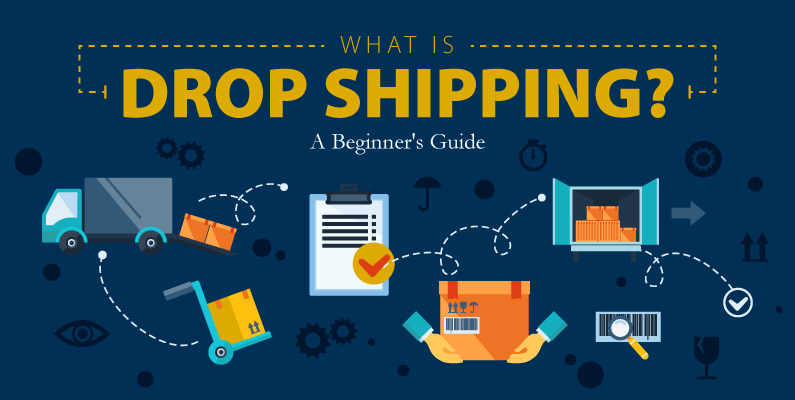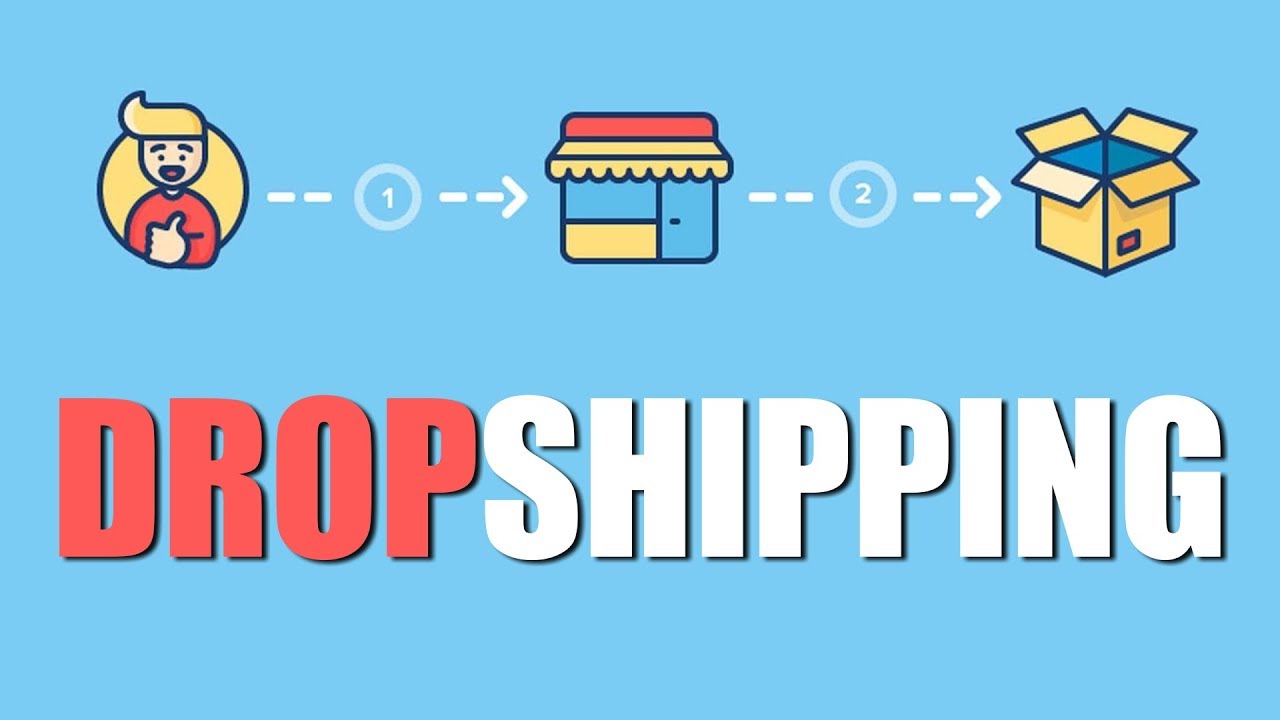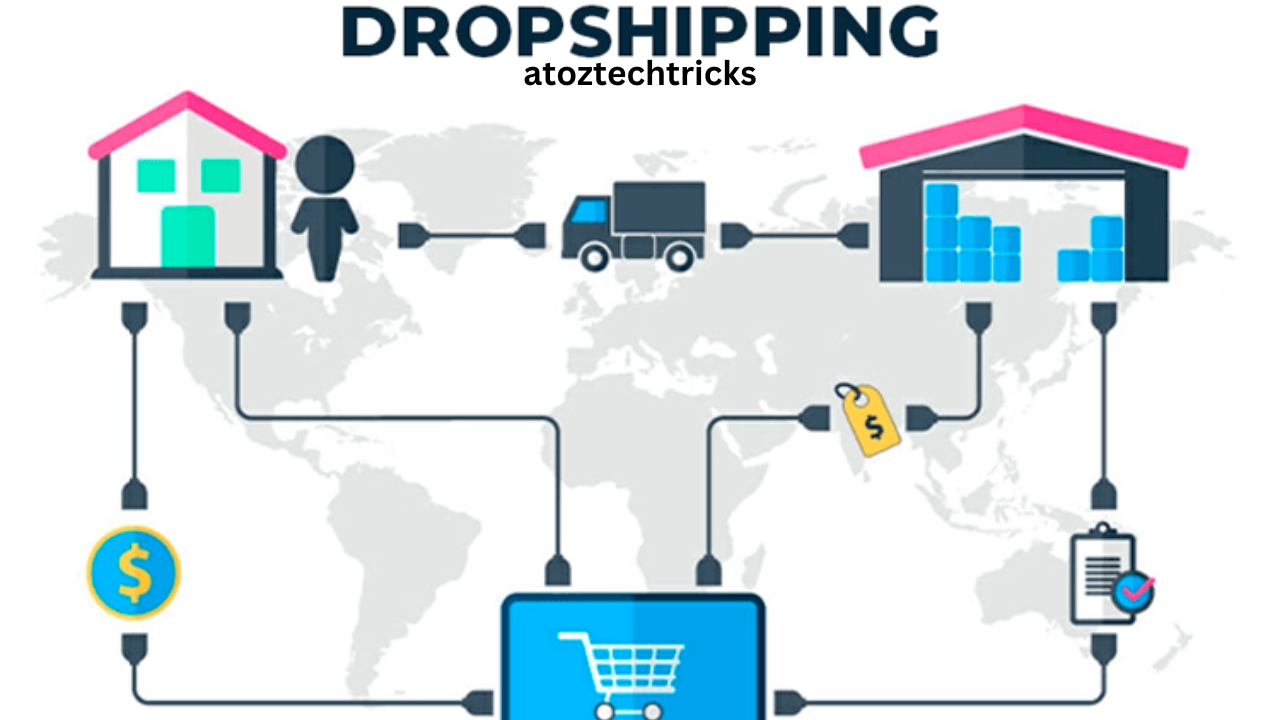Shop Smart with Dropshipping – Find the Best Products without the Inventory Hassle
In the dynamic world of e-commerce, dropshipping has emerged as a game-changer for both aspiring entrepreneurs and established businesses. The dropshipping model offers a pathway to success without the burden of traditional inventory management. If you’re looking to tap into this lucrative market and find the best products to sell, this comprehensive guide will walk you through the ins and outs of dropshipping, helping you shop smart and avoid common pitfalls.
1. Understanding Dropshipping
1.1 What is Dropshipping?
Dropshipping is an e-commerce business model where the retailer doesn’t keep products in stock. Instead, when a customer places an order, the retailer purchases the item from a third-party supplier, who then ships the product directly to the customer. This model eliminates the need for warehousing and inventory management, allowing retailers to focus on marketing and customer service.

1.2 How Dropshipping Works
The dropshipping process involves three main steps:
- Customer Orders: A customer places an order on your online store.
- Order Forwarding: You forward the order details to your dropshipping supplier.
- Product Fulfillment: The supplier ships the product directly to the customer on your behalf.
This model reduces overhead costs and risks associated with unsold inventory, making it an attractive option for many entrepreneurs.
2. Benefits of Dropshipping
2.1 Low Startup Costs
One of the most significant advantages of dropshipping is the low barrier to entry. Since you don’t need to invest in inventory upfront, you can start a dropshipping business with minimal capital. This makes it an ideal option for those with limited financial resources but a passion for entrepreneurship.
2.2 No Inventory Management
Traditional retail businesses require substantial investment in inventory, storage, and warehousing. With drop shipping, you bypass these concerns, as the supplier handles inventory management and fulfilment. This allows you to focus on growing your business without the hassle of managing stock levels.
2.3 Flexibility and Scalability
Dropshipping provides unparalleled flexibility. You can run your business from anywhere with an internet connection and scale it as needed. Since you’re not tied to physical inventory, you can easily add or remove products based on market trends and customer demand.
2.4 Wide Product Selection
Dropshipping allows you to offer a diverse range of products without committing to large quantities of stock. This means you can test various products and niches to find what resonates with your target audience. By analyzing sales data and customer feedback, you can continuously refine your product offerings.
3. Finding the Best Products for Dropshipping
3.1 Conduct Market Research
Before diving into dropshipping, it’s crucial to conduct thorough market research. Understanding market trends, customer preferences, and competitor strategies will help you identify profitable niches and product opportunities. Here are some strategies to guide your research:
- Trend Analysis: Use tools like Google Trends, Trend Hunter, and social media platforms to identify emerging trends and popular products.
- Competitor Analysis: Analyze successful dropshipping stores to understand their product offerings, pricing strategies, and marketing tactics.
- Customer Feedback: Gather insights from customer reviews, forums, and social media to understand what customers are looking for and what problems they need to solve.
3.2 Choose a Profitable Niche
Selecting a profitable niche is key to dropshipping success. A niche is a specific segment of the market with its own unique needs and preferences. Choosing the right niche allows you to target a focused audience and reduce competition. Consider the following factors when selecting a niche:
- Passion and Knowledge: Choose a niche that aligns with your interests and expertise. Your passion will drive you to stay committed and continuously improve your product offerings.
- Market Demand: Evaluate the demand for products in your chosen niche. Use keyword research tools to gauge search volume and trends.
- Profit Margins: Ensure that the products in your niche offer healthy profit margins. Calculate potential profits by factoring in product costs, shipping fees, and marketing expenses.
3.3 Source Reliable Suppliers
Finding reliable suppliers is crucial for a successful dropshipping business. Your supplier’s performance directly impacts customer satisfaction, so choose partners who offer quality products, timely shipping, and excellent customer service. Here are some tips for sourcing suppliers:
- Supplier Directories: Utilize directories like AliExpress, Oberlo, and SaleHoo to find reputable dropshipping suppliers.
- Supplier Reviews: Read reviews and ratings from other drop shippers to assess supplier reliability and product quality.
- Sample Orders: Order samples to evaluate product quality, packaging, and shipping times. This helps you ensure that your customers receive high-quality products.
3.4 Evaluate Product Viability
Once you’ve identified potential products, evaluate their viability based on several factors:
- Demand and Competition: Analyze market demand and competition for each product. Look for products with high demand but low competition to maximize your chances of success.
- Profitability: Calculate potential profit margins for each product. Consider factors like wholesale prices, shipping costs, and pricing strategies.
- Product Quality: Assess product quality to ensure it meets customer expectations. High-quality products lead to positive reviews and repeat business.

4. Building Your Dropshipping Store
4.1 Choose the Right Platform
Selecting the right e-commerce platform is essential for managing your dropshipping business efficiently. Popular platforms for dropshipping include:
- Shopify: Known for its user-friendly interface and extensive app integrations, Shopify is a popular choice for dropshipping businesses.
- WooCommerce: A flexible WordPress plugin that offers customizable features and integrations for dropshipping.
- BigCommerce: A comprehensive platform with advanced features for scaling your dropshipping business.
4.2 Create a User-Friendly Store
Design a professional and user-friendly online store to attract and retain customers. Key elements to consider include:
- Navigation: Ensure that your store is easy to navigate with clear categories and search functionality.
- Product Listings: Provide detailed product descriptions, high-quality images, and customer reviews to enhance the shopping experience.
- Mobile Optimization: Optimize your store for mobile devices to cater to the growing number of mobile shoppers.
4.3 Implement Effective Marketing Strategies
Marketing plays a crucial role in driving traffic and sales to your dropshipping store. Consider the following strategies to boost your marketing efforts:
- Social Media Marketing: Leverage platforms like Facebook, Instagram, and TikTok to promote your products and engage with your audience.
- Search Engine Optimization (SEO): Optimize your store for search engines to increase organic traffic and improve your search rankings.
- Email Marketing: Build an email list and send targeted campaigns to nurture leads, promote special offers, and encourage repeat purchases.
- Influencer Marketing: Partner with influencers in your niche to reach a broader audience and build credibility.
5. Managing Your Dropshipping Business
5.1 Monitor Performance Metrics
Tracking key performance metrics is essential for evaluating the success of your dropshipping business. Key metrics to monitor include:
- Sales and Revenue: Track your sales and revenue to assess your business’s financial health and identify trends.
- Customer Acquisition Cost (CAC): Calculate the cost of acquiring new customers and optimize your marketing strategies to reduce CAC.
- Conversion Rate: Measure the percentage of visitors who purchase to evaluate the effectiveness of your store’s design and marketing efforts.
5.2 Provide Excellent Customer Service
Customer service plays a critical role in retaining customers and building a positive reputation. Ensure that you:
- Respond Promptly: Address customer inquiries and concerns promptly.
- Offer Support: Provide clear contact information and support channels, such as live chat or email.
- Handle Returns and Refunds: Establish a clear returns and refunds policy to address customer issues and maintain satisfaction.
5.3 Stay Updated with Industry Trends
The e-commerce and dropshipping landscape is constantly evolving. Stay informed about industry trends, new technologies, and changing consumer preferences to adapt your strategies and stay competitive.
6. Common Challenges in Dropshipping
6.1 Supply Chain Issues
Supply chain disruptions can impact product availability and shipping times. To mitigate this risk, work with reliable suppliers, monitor inventory levels and communicate transparently with customers about potential delays.
6.2 Competition and Market Saturation
As dropshipping becomes more popular, competition in various niches increases. To stand out, focus on providing exceptional customer service, unique product offerings, and effective marketing strategies.
6.3 Quality Control
Ensuring product quality can be challenging when you’re not handling the products directly. Regularly review supplier performance, and order samples, and monitor customer feedback to maintain high product standards.

Dropshipping offers a flexible and cost-effective way to enter the e-commerce market without the burden of inventory management. By conducting thorough market research, selecting a profitable niche, sourcing reliable suppliers, and implementing effective marketing strategies, you can build a successful dropshipping business and shop smartly. Remember to stay informed about industry trends, provide excellent customer service, and continuously evaluate your performance to achieve long-term success.
By following these guidelines, you can navigate the world of dropshipping with confidence and find the best products to grow your business without the inventory hassle.




Post Comment